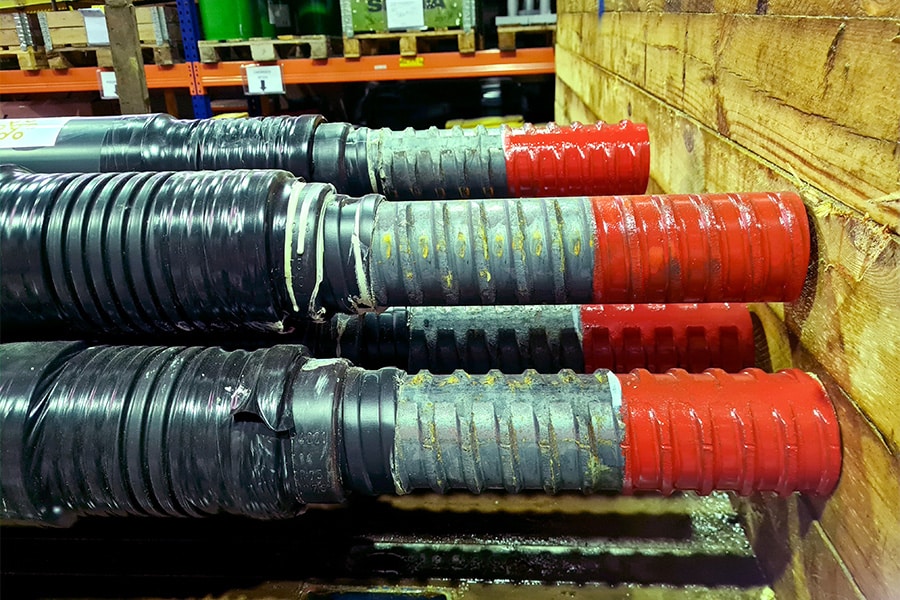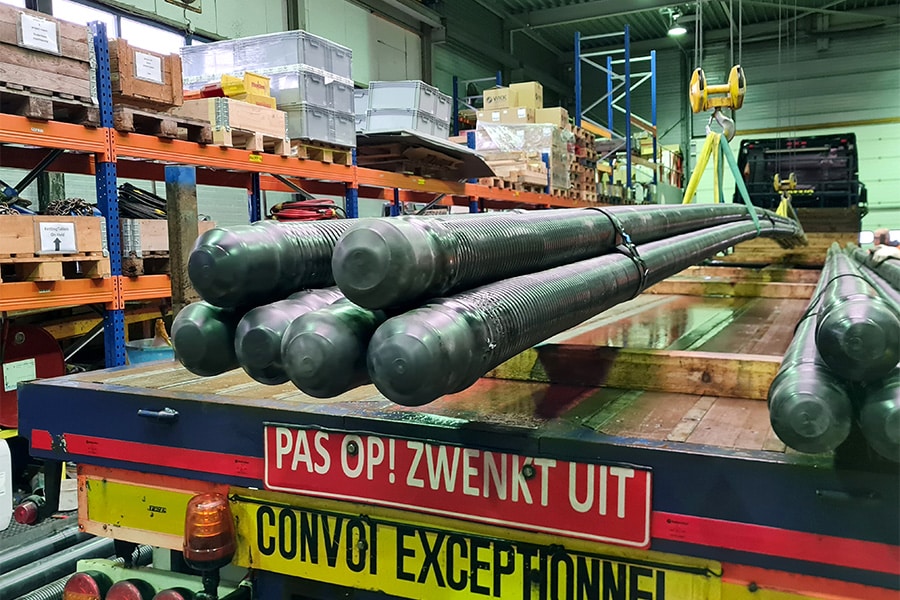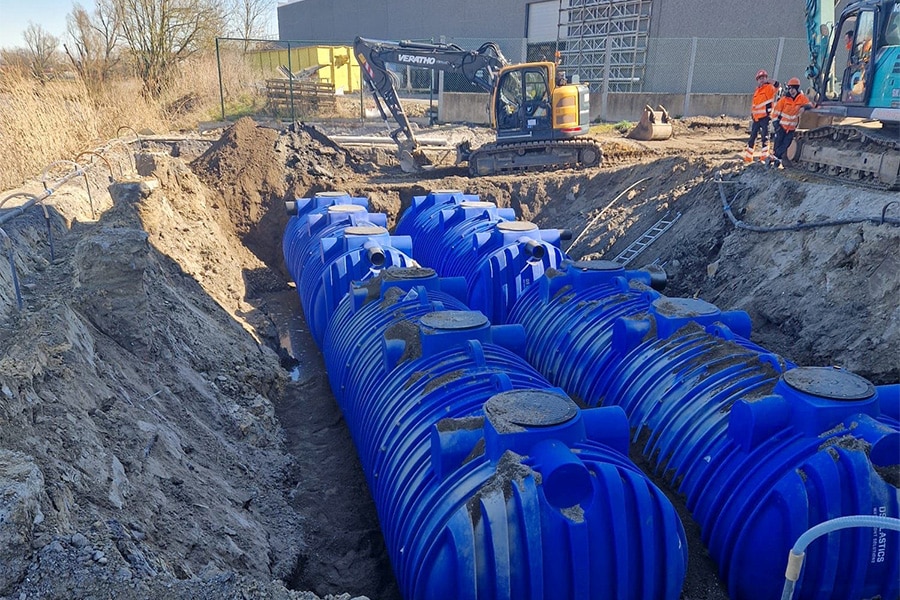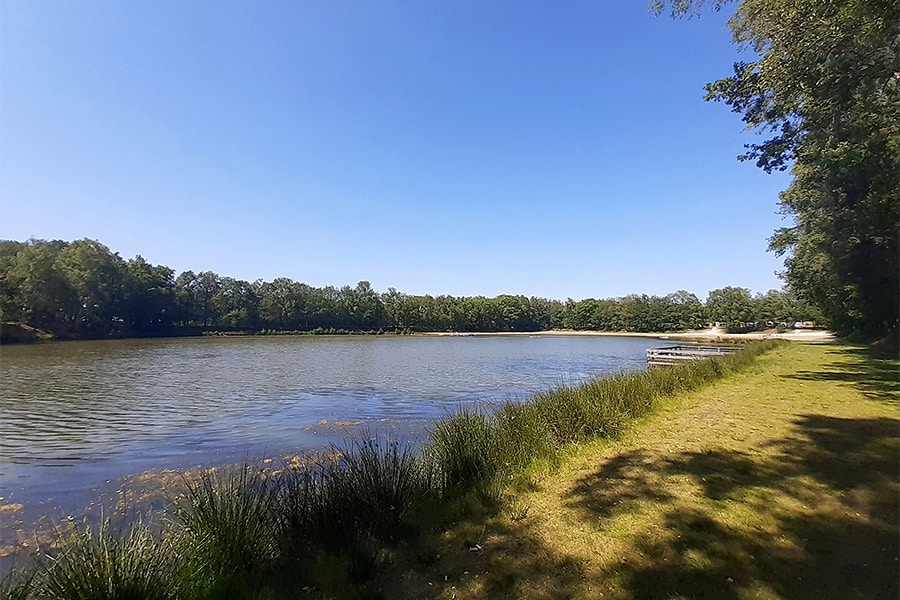
How It's Made: Ground anchor with double corrosion protection
Of a ground anchor, in practice you often only see the anchor head on the sheet piling. However, a whole process precedes it. For our column 'how it's made' we visit the production site of DYWIDAG in Zaltbommel where we witness the production of extremely large ground anchors with double corrosion protection.
Ground anchors are often huge and heavy. "With an average anchor, you're talking about rods 13 to 14 meters long in diameters of 50 to 63 millimeters," says Robert Jansen of DYWIDAG. "Depending on the project, they are coupled to arrive at longer lengths." For a special project just outside our borders, DYWIDAG deviates from the usual formats and produces anchors in a diameter of 75 millimeters with a total length of no less than 36 meters. And as if that were not special enough, the rods are wrapped with double corrosion protection.

PE pipe
There are only a few parties who can produce so-called DCP anchors with double corrosion protection. In fact, DYWIDAG is the only company that produces them in the Netherlands. Robert grants us a look behind the scenes at the production site in Zaltbommel. "The DCP anchors we are now producing consist of two coupled rods of 18 meters each in a diameter of 75 millimeters. The combined rod is then inserted into a ribbed PE pipe. The void space is filled with a special injection mortar. Finally, a smooth PE pipe is slid over that ribbed pipe. That combination provides double corrosion protection."
Craftsmanship
Inserting a coupled rod into a PE pipe is not easy as it is, let alone repeating that 'trick' and injecting it as well, says Robert. "It requires the necessary craftsmanship. And we master that technique like no other, as you can see." In total, DYWIDAG is producing 125 coupled DCP anchors for this project. "A big job, but we have been explained to that. Nevermind that we do push the limits of our production capacity with this kind of format." The first DCP anchors in the series have already been delivered to a satisfied customer.
DCP anchors are commonly used to anchor sheet pile structures or concrete floors. "Think of it as a tensile anchor that you build in to hold a structure in place," Robert explains. "On site, the anchor is drilled in and then disappears almost completely from view. Only the tip remains visible, the anchor head." So now we also know what's behind that and how the anchor is made and preserved.



